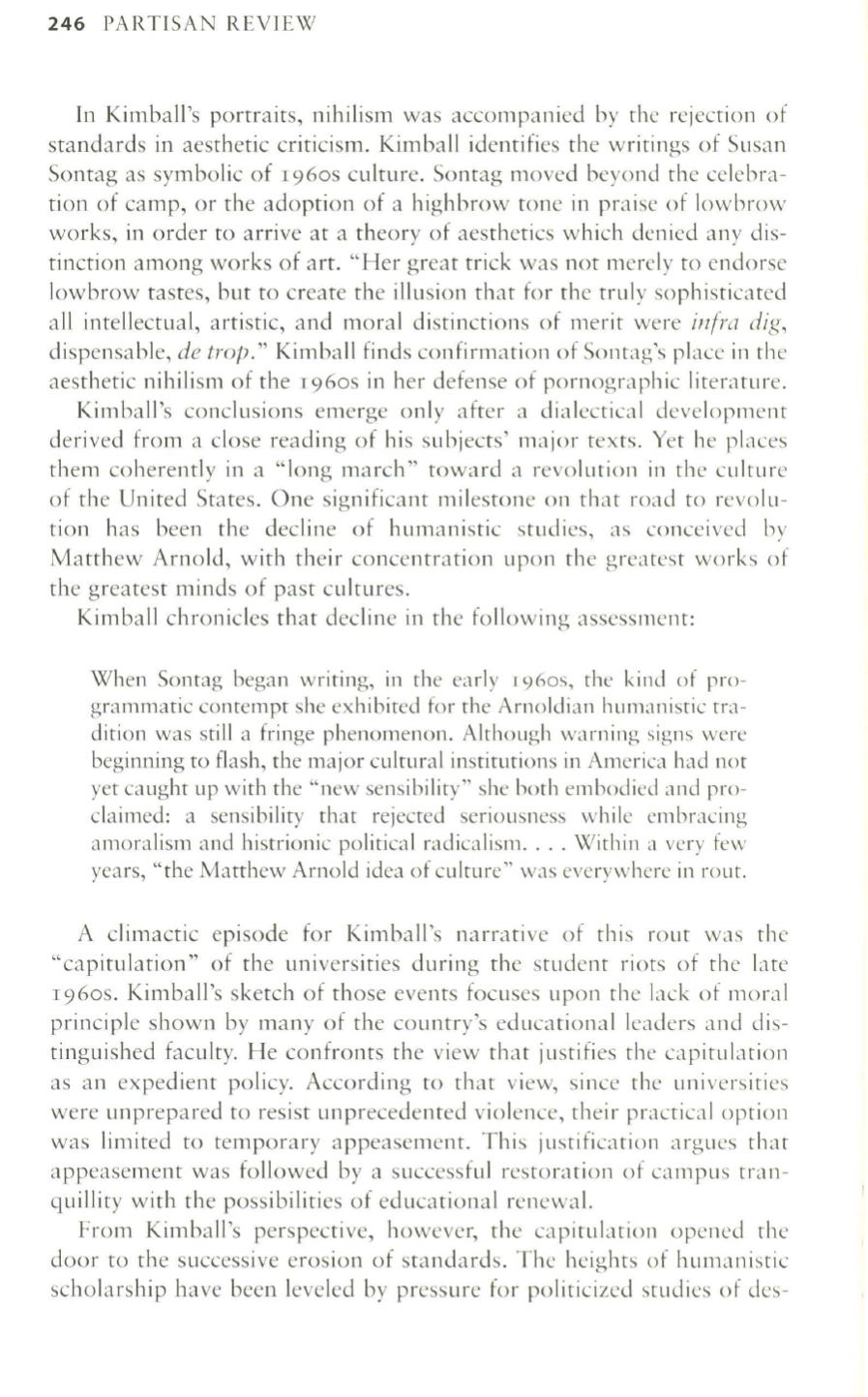
246
PARTISAN REVIEW
In Kimball's portraits, nihilism was accompanied by the rejection of
standards in aesthetic criticism. Kimball identifies the writings of Susan
Sontag as symbolic of T960S culture. Sontag moved beyond the celebra–
tion of camp, or the adoption of a highbrow tone in praise of lowbrow
works, in order to arrive at a theory of aesthetics which denied any dis–
tinction among works of art. "Her great trick was not merely
to
endorse
lowbrow tastes, but
to
create the illusion that for the truly sophisticated
all intellectual, artistic, and moral distinctions of merit were
infra dig,
dispensable,
de trap."
Kimball finds confirmation of Sontag's place in the
aesthetic nihilism of the 1960s in her defense of pornographic literature.
Kimball's conclusions emerge only after a dialectical development
derived from a close reading of his subjects' major texts. Yet he places
them coherently in a "long march" toward a revolution in the culture
of the United States. One significant milestone on that road to revolu–
tion has been the decline of humanistic studies, as conceived by
Matthew Arnold, with their concentration upon the greatest works of
the greatest minds of past cu ltures.
Kimball chronicles that decline in the following assessment:
When Sontag began writing, in the early 1960s, the kind of pro–
grammatic contempt she exhibited for the Arnoldian humanistic tra–
dition was stil l a fringe phenomenon. Although warning signs were
beginning
to
flash, the major cultural institutions in America had not
yet caught up with the "new sensibility" she both embodied and pro–
claimed: a sensibility that rejected seriousncss while cmbracing
amoral ism and histrionic political radicalism.... Within a very few
years, "the Matthew Arnold idea of culture" was everywhere in rout.
A climactic episode for Kimball's narrative of this rout was the
"capitulation" of the universities during the student riots of the late
1960s. Kimball's sketch of those events focuses upon the lack of moral
principle shown by many of the country's educational leaders and dis–
tinguished facu Ity. He con fronts the view that justi fies the ca pi tu la tion
as an expedient policy. According to that view, since the universities
were unprepared to resist unprecedented violence, their practical option
was limited
to
temporary appeasement. This justification argues that
appeasement was followed by a successful restoration of campus tran–
quillity with the possibilities of educational renewal.
From Kimball's perspective, however, the capitulation opened the
door to the successive eros ion of standards. The heights of humanistic
scholarship have been leveled by pressure for politicized studies of des-


